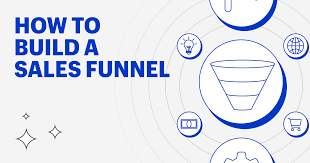Account-Based Marketing (ABM) has emerged as a powerful strategy for B2B marketers looking to create personalized and targeted campaigns. Unlike traditional marketing approaches that cast a wide net, ABM focuses on identifying and engaging specific high-value accounts. This article explores strategies for effective Account-Based Marketing, emphasizing the importance of targeting the right audience.
1. Identifying High-Value Accounts:
a. Collaboration between Sales and Marketing: Successful ABM begins with close collaboration between sales and marketing teams. By aligning their efforts, organizations can identify key accounts that align with both marketing and sales objectives.
b. Data-Driven Approach: Utilize data analytics and customer relationship management (CRM) tools to analyze past successes, customer behavior, and market trends. This data-driven approach helps identify accounts with the highest potential for conversion.
2. Creating Buyer Personas:
a. Detailed Customer Profiling: Develop detailed buyer personas for target accounts. Understand the pain points, challenges, and goals of decision-makers within these accounts to tailor marketing messages accordingly.
b. Behavioral Analysis: Analyze the online and offline behavior of target accounts. This includes studying their engagement with your website, social media interactions, and responses to previous marketing campaigns.
3. Personalized Content and Messaging:
a. Tailored Campaigns: Craft personalized content that resonates with the specific needs of each target account. This might include case studies, whitepapers, or webinars that address their industry challenges.
b. Dynamic Content: Implement dynamic content strategies to ensure that your messaging evolves based on the interactions and behaviors of the target accounts. This keeps your communication relevant and engaging.
4. Multi-Channel Engagement:
a. Integrated Marketing Channels: Implement ABM across various marketing channels such as email, social media, content marketing, and events. Consistent messaging across multiple touchpoints enhances brand visibility and reinforces key messages.
b. Orchestrated Campaigns: Coordinate marketing efforts across channels to deliver a cohesive and synchronized experience. This ensures that the target accounts receive a unified message, reinforcing the value proposition.
5. Continuous Monitoring and Adaptation:
a. Real-Time Analytics: Utilize real-time analytics to monitor the performance of ABM campaigns. Track engagement metrics, conversion rates, and other key performance indicators to assess the effectiveness of your strategies.
b. Iterative Improvement: ABM is an iterative process. Regularly review campaign performance and gather feedback from sales teams. Use this information to refine and optimize your targeting strategies for ongoing success.
Conclusion:
Effectively targeting the right audience is at the heart of successful Account-Based Marketing. By aligning sales and marketing efforts, creating detailed buyer personas, personalizing content, engaging across multiple channels, and continuously monitoring and adapting strategies, organizations can maximize the impact of their ABM campaigns. In a B2B landscape where personalized relationships are key, ABM stands out as a strategic approach that drives meaningful connections and lasting business outcomes.





